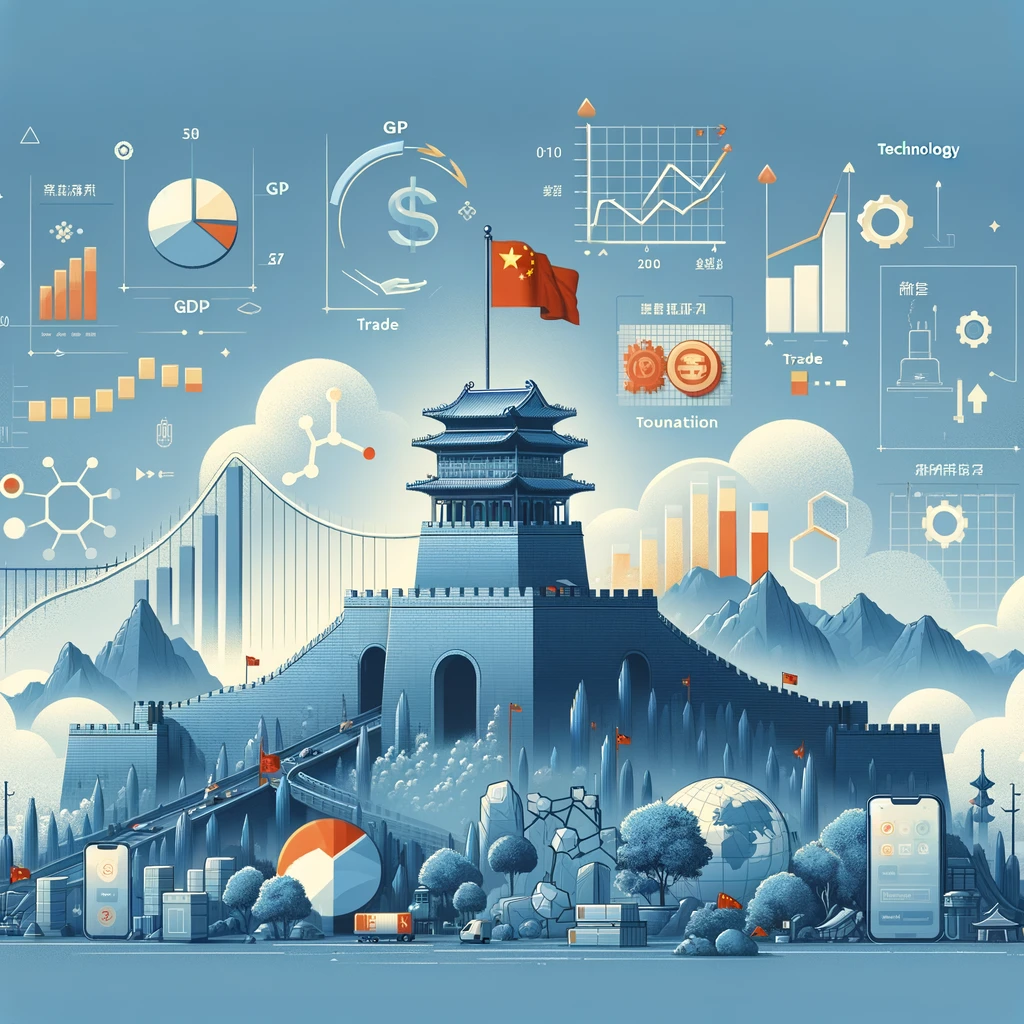China has hit the ground running this year, with its factories kicking into high gear. However, maintaining this pace might be a tall order without substantial improvements across various sectors. This Tuesday is set to bring a flood of official data that could confirm whether the Chinese economy is on the mend after its prolonged slump following the pandemic.
Predictions from a Bloomberg survey are pointing to a 4.8% rise in GDP for the first quarter compared to last year, fueling hopes that the country might meet its 5% growth target for the year.
Recent upticks in trade and manufacturing sectors have led economists from major financial institutions, including Goldman Sachs, to raise their economic forecasts for 2024.
However, a dip in March exports and the heavy reliance on foreign demand underscore the pressing need for boosting domestic consumption, experts suggest.
Industrial Strength and Power Usage: Core Economic Indicators
When it comes to measuring economic strength, industrial production and power generation are at the forefront. Reporting by the National Bureau of Statistics China and insights from Macquarie Group highlight a significant upturn in these areas.
Industrial production surged at its quickest pace in the first two months of this year, the fastest in two years, with an anticipated additional 6% increase in March year-over-year.
This growth in industrial output is often mirrored by power generation stats, a critical indicator due to the industry’s high energy demands. Since China lifted COVID-19 restrictions, there’s been a notable rebound in power production. This resurgence is fueled by falling coal prices, making it more economical for plants to increase output, subsequently boosting power consumption in recent months.
Challenges in the Housing Market
Despite the positive signs in industrial sectors, China’s real estate market continues to struggle. Sales of residential buildings plummeted by 33% in value during the January-February period compared to the previous year, marking the most significant drop since May 2022. This downturn suggests further contractions are likely in March.
Haibin Zhu from JPMorgan Chase emphasizes that new home sales, a crucial indicator of market sentiment and investment potential, remain weak, indicating a possible third consecutive year of contraction in housing activities. Even with relaxed regulations aimed at boosting home purchases, March is expected to show continued declines in property investments.
Nominal GDP growth initially appears robust until you consider the deflationary undercurrents affecting the economy. The GDP deflator—a measure calculated from the difference between nominal and real GDP growth rates—has been on a decline, marking the longest downward trend since 1999. This metric is particularly concerning as it underscores a stark contrast with the inflationary pressures seen in the U.S., highlighting the unique challenges China faces.
Credit Impulse and Labor Market Concerns
The credit sector in China is also showing signs of strain. Data from Bloomberg Economics reveals that new bank loans increased at the slowest rate ever recorded in March, and broader credit measures expanded at their slowest pace to date, hinting at a deep-seated lack of confidence in the economic recovery. Frederic Neumann from HSBC points out that this “creditless recovery cycle” could pose significant challenges to sustaining growth.
The labor market in China is another area of concern, with unemployment rates, especially among the youth, remaining high. Despite some sectors reporting wage increases in the first quarter of 2024, the overall scenario includes wage freezes and layoffs, dampening hopes for a quick recovery. However, the rise in wages in some sectors provides a silver lining, potentially indicating a tightening job market and the beginning of an economic rebound.





